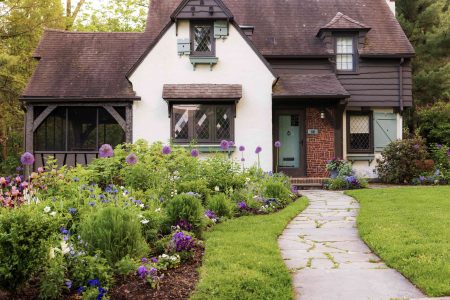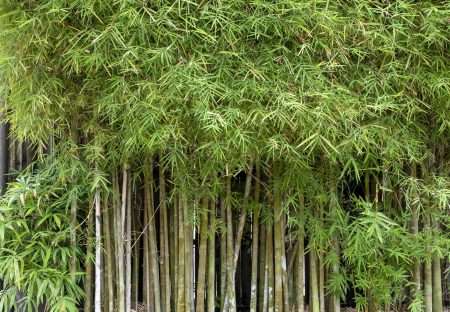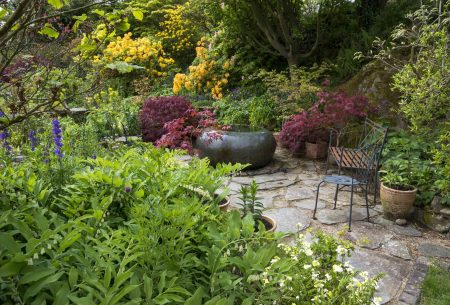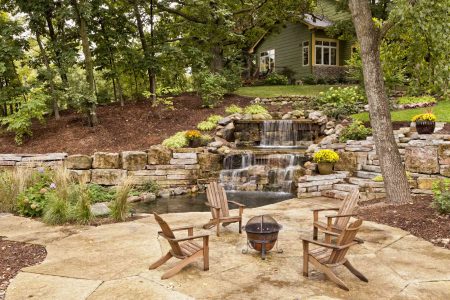Many edible plants can be incorporated throughout your yard rather than relegated to the vegetable garden. There are two caveats to edible landscaping: Plants should look attractive all season and they shouldn’t be eaten by animals before you get the chance to indulge. That’s not easily accomplished, but berry plants may be the solution.
Berry plants tend to be small enough to look appropriate in any size yard. Most have attractive leaves and flowers––and, of course, the glossy, colorful berries are a great attraction too. Berries require minimal maintenance, as they are rarely affected by serious pests and diseases, and a good annual berry pruning routine will keep them healthy and shapely. The biggest chore for berry growers will be protecting the fruit from the birds and other passing critters.
There are several ways you can begin to incorporate berries into your landscape. Edible berry bushes can be used as individual specimen plants or lined up as hedges. Low growers can be used as ground covers or edging plants. Vines can be trained along fences or over arbors. You can even grow some berries in containers to look good and have handy on the patio.
Consider the following small list of easy-to-grow, attractive, and delicious edible berry plants to use in landscaping.
-
01
of 07Blueberries
There are two options when growing blueberries:
Highbush blueberries are an excellent choice with their small white cup-shaped flowers in spring and their dazzling red color in the fall. Most don’t get taller than 6 feet and they can even be grown in containers.
Lowbush blueberries only grow about 18 inches high. They spread by runners and with their ability to withstand dry soil, they make nice options for covering a spot where the grass doesn’t want to grow.
-
02
of 07Brambles
The brambles––raspberries, blackberries, and gooseberries––are great for creating a hedge. You can use any of the bushy berries for hedging, but brambles work especially well because they are big, floppy, rambling plants. They can create a privacy screen in little time. They will quickly disguise an ugly fence and the thorny varieties will be a deterrence to dogs and other unwelcome visitors.
Brambles are usually trained along supports to encourage more fruiting, but they will produce plenty even if they are left alone to grow along your fence.
There is also a low growing raspberry, ‛Formosa Carpet,’ that is evergreen and spreads to form a mat ground cover. The fruit is different from the raspberries we’re used to, but it is tasty.
-
03
of 07Currants
Currant bushes have lovely lobed leaves, like fancy maples. They branch out with an airy appearance and have tiny berries in red, white, pink and black. If you want a more formal look in your landscape, currants can be trained into standards. They look great as stand-alone plants or as ornamental plants closer to your home,
-
04
of 07Elderberries
Elderberry is a large shrub capable of reaching 20 feet tall. It can be pruned to maintain its size, but it is a beautiful shrub with sprays of star-shaped white flowers that give way to shiny dark-purple fruits. You can try your hand at winemaking or save them for jams and pie. Fall foliage is a mix of reds, yellow, and orange.
Continue to 5 of 7 below -
05
of 07Grapes
Vining fruits are wonderful for scrambling over fences and structures. Grapes are the obvious choice for draping over an arbor. The big leaves will create a shady nook and the clusters of grapes will dangle down for easy access. Make sure you can reach the vines so you can keep them pruned and producing well.
-
06
of 07Kiwi
Kiwi vines are beautiful plants with big heart-shaped leaves. They are large, vigorous vines that attach by twining. They’ll need strong support, but since they can live for decades, it’s a good investment. Because most kiwi vines are dioecious, you will generally need two plants––a male and a female––to get fruit. However, there are varieties, like ‛Issai,’ that have been bred with both sex flowers on one plant.
-
07
of 07Strawberries
Strawberries are spreaders by nature and make excellent ground covers. The June bearing types will spread extensively by runners, but the everbearing and day-neutral varieties tend to be better behaved. They require some annual maintenance to keep the plants producing and they also need protection from birds and other animals, but you will generally get enough of a harvest to share. Or, grow your strawberries in containers and keep them safely on your deck.
Read the full article here














